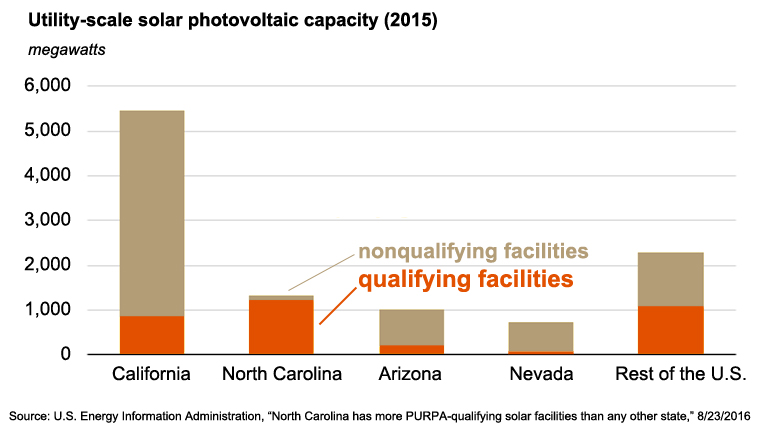
Owing to a long menu of highly favorable state policies, North Carolina has
60 percent of that nation’s PURPA qualifying solar facilities all by itself.
David Fountain, the North Carolina president for Duke Energy, writes in Charlotte Business Journal:
Today, Duke Energy must buy from solar developers at 15-year contracts at fixed prices that are higher than market. Those costs are passed directly to customers. Over the next 12 years, we estimate customers will be spending more than $1 billion extra compared to the market prices that the same power could be purchased for today.
Fountain points out that 75 percent of North Carolina solar facilities are located in eastern NC, which “has stressed the system’s operational limits and created reliability risks for customers.”
He warned that “continued growth at this level – at higher costs and in this haphazard manner – is not sustainable.”
Fountain points out something Locker Room readers already know:
North Carolina’s current interpretation of the law has caused a “gold rush” to the state with out-of-state developers flocking to take advantage of the state’s lucrative rules, at the expense of North Carolina customers. A total of 60 percent of the nation’s PURPA projects are in North Carolina.
As recently discussed here, North Carolina’s reckless favoritism of an intermittent energy source to the detriment of poor ratepayers and electricity system reliability goes beyond its interpretation of PURPA.
This state’s rush to flunk both proper measures of electricity provision — least-cost and reliable — owes to numerous state policies favoring solar energy facilities (here’s a list).


